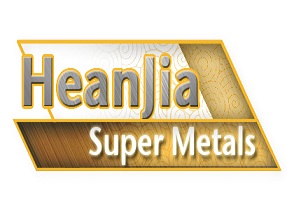You are here: home > Nikrothal News > Classification of Resistance elements on the base of furnace environments
Product (738)
- Pure Nickel Products (38)
- Incoloy Products (74)
- Inconel Products (72)
-
FeCrAl Product
(99)

-
Nichrome Products
(68)

- Monel Products (36)
- Hastelloy Products (49)
- Nickel Iron Alloy Product (59)
-
Nickel Copper alloys
(47)

- Nonferrous Metal Product (27)
-
Resistance Wire
(90)

- Stainless Steel Product (42)
- Mesh Demister (20)
- Others (17)
Product Forms (14)
Quality Certificate (11)
Learning Gallery (30)
Incoloy News (9)
Inconel News (22)
Molybdenum News (7)
Nikrothal News (4)
Nichrome News (13)
Titanium News (2)
Nickel News (8)
Alloys House (30)
Tools (27)
Nickel alloy News (30)
Latest Buzz (30)
nickel chrome copper iron alloys news (28)
Credit Report
Products Index
Company Info
Heanjia Super-metals Co., Ltd. [China (Mainland)]
Business Type:Manufacturer, Trading Company
City: Beijing
Province/State: Beijing
Country/Region: China (Mainland)
Nikrothal News
Classification of Resistance elements on the base of furnace environments
The electric heating elements often follow the rule that the heat producing end lies in the furnace and the cold end is directed to the furnace wall to prevent the chances of overheating and large heat loses. This rule is followed by decreasing the resistance of nikrothal wire at the cold ends by following the different methods. The metallic compounds like molybdenum disilicide and silicon carbide are used at the cold ends with larger diameter as compare to the hot section.
The silicon carbide elements with constant diameter need the resistance proportion that is obtained by reducing the resistance value at the cold zone. This is obtained by siliconize the edges to minimize the resistance or by connected the cold edges ceramically at the reduced resistance of silicon carbide concentration to the warm section.
The silicon carbide elements with constant diameter need the resistance proportion that is obtained by reducing the resistance value at the cold zone. This is obtained by siliconize the edges to minimize the resistance or by connected the cold edges ceramically at the reduced resistance of silicon carbide concentration to the warm section.
The metallic elements offer the benefit of the presenting themselves in the wire and strip forms by which these are enables to be produced and engineered by following the traditional metal production processes in the various shapes and sizes.Moreover the heating system installing the metallic elements like nikrothal resistance wire can be designed to perform on line potential while using silicon carbide and molybdenum disilicide materials by the support of transformer. The metallic materials are much less costlier than the silicon carbide and molybdenum disilicide materials to achieve the equal power output.
Besides of these the metallic materials also offer less Met value and these are not self endurable and the resistance value of these elements increases with the passage of time due to decrease in the cross section area by oxidation and increase in the length that results into reduction in the output power and failure ultimately.
The affects of these constraints can be reduced by choosing the suitable elements and their configurations for the suitable MFT and the furnace environments and by preventing the external application of the design sheath.
The physical properties of nickrothal heating wire and other resistance alloys depend on the composition.The production delicacies tend to introduce the variety in MET and electrical resistivity. Generally, the higher value of MET results in increment in the cost of the material. The performance of the Fe- Cr – Al resistance wire heating alloys can be enhanced by pre- oxidation, preferred if the environment of furnace is neutral or reducing. The neutral environment refers to heat emissive or nitrogen and reducing environment refers to heat absorbing and hydrogen.
The nichrome resistance wire should not be used in the furnace with exothermic and endothermic conditions since they are employed to the special oxidation of the chromium in the 800 to 950 degree Celsius temperature range. The minimum MET value refers to performance in the vacuum since the shielding oxides on the upper layer of the material are rapidly deoxidized at the higher temperature in the vacuum. As the highest temperature in furnace is always less than MET value so the following consequences are obtained:
1. For MET less than 1425 °C, the heating elements can be technically possible that is the selection of the elements will depend on the operation and budget.
2. For MFT between 1425 to 1650 °C, the silicon carbide and molybdenum disilicide are both viable.
2. For MFT between 1425 to 1650 °C, the silicon carbide and molybdenum disilicide are both viable.
3. For MFT more than 1650 °C, the molybdenum disilicide is solely viable.
Pre Page:
Resistance and conductance of physical...
Next Page:
Temperature constraints to Heating...
.gif)


